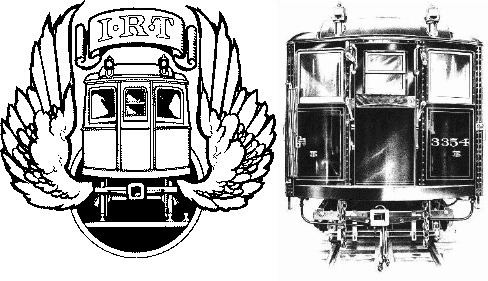Status In operation | Services 8 Founded 1973 | |
 | ||
Opened 1904; 113 years ago (1904) Closed 1940; 77 years ago (1940)(acquisition by the NYC Board of Transportation) Depot(s) 239th Street Yard, 240th Street Yard,Corona Yard, East 180th Street Yard,Jerome Yard, Livonia Yard, Westchester Yard Type of business Underground and above-ground metro | ||
The Interborough Rapid Transit Company (IRT) was the private operator of the original underground New York City Subway line that opened in 1904, as well as earlier elevated railways and additional rapid transit lines in New York City. The IRT was purchased by the City in June 1940. The former IRT lines (the numbered routes in the current subway system) are now the A Division or IRT Division of the Subway.
Contents
- 7 train roosevelt av jackson hts subway station new york city
- History
- The Bronx and Manhattan
- Brooklyn and Queens
- River Crossings
- After 1940
- References
7 train roosevelt av jackson hts subway station new york city
History
The first IRT subway ran between City Hall and 145th Street at Broadway, opening on October 27, 1904. It opened following more than twenty years of public debate on the merits of subways versus the existing elevated rail system and on various proposed routes.
Founded on May 6, 1902, by August Belmont, Jr., the IRT's mission was to operate New York City's initial underground rapid transit system after Belmont's and John B. McDonald's Rapid Transit Construction Company was awarded the rights to build the railway line in 1900, outbidding Andrew Onderdonk. On April 1, 1903, over a year before its first subway line opened, the IRT acquired the pre-existing elevated Manhattan Railway by lease, gaining a monopoly on rapid transit in Manhattan. The Manhattan EL was the operator of four elevated railways in Manhattan with an extension into the Bronx. The IRT coordinated some services between what became its subway and elevated divisions, but all the lines of the former Manhattan EL have since been dismantled.
In 1913, as a result of massive expansion in the city, the IRT signed the Dual Contracts with Brooklyn Rapid Transit (BRT) in order to expand the subway.
The IRT ceased to function as a privately held company on June 12, 1940, when its properties and operations were acquired by the City of New York.
Today, the IRT lines are operated as the A Division of the subway. The remaining lines are underground in Manhattan, except for a short stretch across Harlem at 125th Street and in northernmost Manhattan. Its many lines in the Bronx are predominantly elevated, with some subway, and some railroad-style right-of-way acquired from the defunct New York, Westchester and Boston Railway, which now constitutes the IRT Dyre Avenue Line. Its Brooklyn lines are underground with a single elevated extension that reaches up to New Lots Avenue, and the other reaching Flatbush Avenue via the underground Nostrand Avenue Line. The Flushing Line, its sole line in Queens, is entirely elevated except for a short portion approaching its East River tunnel and its terminal at Flushing–Main Street (the whole Manhattan portion of the line is underground). The Flushing Line has had no track connection to the rest of the IRT since 1942, when service on the Second Avenue El was discontinued. It is connected to the BMT and the rest of the system via the BMT Astoria Line on the upper level of the Queensboro Plaza station.
The Bronx and Manhattan
Trunk lines include:
Branch lines include:
Brooklyn and Queens
There were three Brooklyn lines built by the IRT:
The only line in Queens is the Flushing Line (7 <7> trains), under 50th Avenue, and over Queens Boulevard and Roosevelt Avenue.
River Crossings
(of the East and Harlem Rivers, from south to north)
